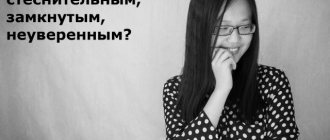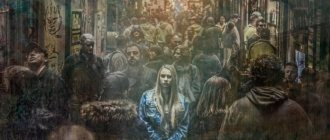Creative thinking and creativity are useful and indispensable skills of a modern person. However, it is difficult to find good courses, trainings, schools, books or textbooks for developing and improving these skills. For these reasons, we have developed this course to develop creative thinking and imagination.
If you've read 99 Francs or Generation P, watched the films of Tarkovsky or David Lynch, or seen the paintings of Leonardo da Vinci or Picasso, you've probably wondered: how can people create so many new interesting ideas and amazing concepts? So if these creative professionals make you want to be like them, you'll find a lot of useful information in our course.
The more unconventional life is, the more interesting it is to live. We are often required to be creative; the ability to think outside the box makes us witty, resourceful, successful, enterprising, lucky and rich. The ability to be creative can be useful always and everywhere.
It is often said that creative thinking cannot be taught, but this is not entirely true. Of course, a person’s innate abilities are very important, but usually it is adults who are truly characterized by creative thinking, the ability for which is not only innate, but acquired with education and experience.
Real works of art, as a rule, are created by adults who have achieved a certain skill in thinking and acting creatively. And if a person does not develop his creative potential, he is unlikely to achieve the ability to create, even if he showed any abilities in childhood.
This means there is something that creative people know and can do. They did not acquire this knowledge and skills genetically from their parents, but accumulated them throughout their lives. Let's try to find and unravel their secrets.
We also want to note that if you want to understand the topic of developing creativity in more detail, we recommend taking our “TRIZ in Practice” program, where in 4 weeks you will evaluate your creative abilities and learn ways to develop them, learn how to apply creative and inventive algorithms.
This course is dedicated to the basic skills of developing creative thinking. However, it will be even better if you take this course first and then move on to the advanced level. So feel free to get down to business, and we will start with a description of what you have to study.
Features of the development of creative thinking
Considering the rapid development of technological progress, we can safely say that creative thinking and creativity are methods for solving any problems that differ from those programmed in a computer.
The technology always operates according to an established program (algorithm), and seeks a classic way out of any situation.
Non-standard approach
A creative person knows how to break established rules.
It requires a flexible, non-standard mindset and the courage to be different from everyone else.
Most often, creative thinking goes against well-known canons.
Ideas that seem crazy at first can lead to a brilliant discovery.
All famous personalities who made a breakthrough in the world of science can boast of such thinking - I. Newton, I. Pavlov, M. Lomonosov and others.
Formation of creative thinking
Creative development starts from proper upbringing and training. It cannot be formed without knowledge of the surrounding world. A person first gets acquainted with the everyday layout of things and phenomena, and only then can he comprehend them in an extraordinary way, “process them.”
Creativity Test
This test was created as an interpretation of the methodology for diagnosing personal creativity, developed by Elena Evgenievna Tunik, candidate of psychological sciences, and allows you to determine four characteristics of a creative personality: curiosity, imagination, complexity and risk-taking.
To correctly interpret the answers, you should adhere to several rules when taking the test:
- Among the short offers offered, you will find some that definitely suit you better than others. For them you should select the answer “Yes”. Some proposals are only partially suitable for you; you should answer “Maybe”. Other statements will not suit you at all; the answer for them is “No”. For those statements about which you cannot come to a decision, the last option is provided - “I don’t know.”
- There are no right or wrong answers here. Mark the first thing that comes to your mind when reading the sentence. This task has no time limit, but work as quickly as possible. Remember that when giving answers to each sentence, you must note what you really feel. Choose only one answer for each question.
- Since the test is based on personal perception, you should not expect it to be an objective test of your abilities. To a greater extent, it reflects your idea of your creative abilities. Remember that creativity is not an innate characteristic, but a quality that can be developed.
- The test data will be recorded after you answer the last question and see confirmation of the end of the test. If you finish the test before the last question and close the page, the data will not be saved.
Statistics Full screen
On the other hand, creative thinking is associated not so much with logical schemes, but with developed associative thinking and human imagination. All this can be developed with the help of special exercises, which represent another important component of the course.
Methods for developing creative thinking
The human mind is unique; it has the ability to adapt to any life situations. In emergency situations, the brain can quickly put the entire necessary situation together and come up with an extraordinary solution.
If a person solves creative thinking problems in everyday life, nothing will take him by surprise. He will find the right way out of any, even the most difficult situation, which will also be beneficial.
Methods for developing creative thinking are based on the fact that any person realizes only a small part of his potential throughout his life, and it is necessary to find ways to “turn on” all the capabilities of the brain.
There are 2 main methods for developing creative thinking:
"Brainstorm"
By A. Osborne. The method was created in 1938, and is still actively used in industry and naval affairs.
It is based on the concepts of generating ideas and their critical evaluation.
Classic brainstorming consists of 2 teams.
The first team must develop as many ways as possible to solve the issue, no matter how unrealistic and even stupid they may seem at first glance.
The second one discusses, develops each proposal, and as a result must settle on one solution.
Important features of brainstorming
- clear division of responsibilities;
- offer the maximum number of ways to resolve the issue;
- be able to develop the craziest ideas that have been proposed;
- be able to work in a team.
Synectics
By W. Gordon. The method was founded in 1948. The main principle is to make known things unknown, to change the standard view of everyday phenomena.
Read more: How to develop emotional intelligence
Examples of synectics
Synectics is based on the following techniques:
- association (search for similar processes, phenomena from a completely different sphere);
- poetic symbols, images;
- fantastic analogy. Why not offer a solution based on the example of a fairy-tale character?
Both of these methods - brainstorming and synectics - should destroy the stereotypical perception of the world and create a completely new, original type of thinking.
Forms of abstract thinking
Abstract thinking is presented in the following basic forms.
- A concept that reflects the characteristics of a class of 1 element, as well as homogeneous objects. Expressed as words and phrases in language
- A judgment is characterized by affirmation or denial. Applies to objects, their relationships or properties. Expressed as a declarative sentence, there are simple and complex varieties.
- Inference is made through one or a series of judgments in accordance with rules. So the development of logic is necessary in order to be able to study these kinds of premises and conclusions.
Development of creative thinking
Creative thinking is directly related to imagination.
A classic example of a well-developed imagination is children's fables. If a child begins to tell something fantastic, it means that his creative thinking is developing well.
The older a person gets, the more difficult it is for him to fantasize. A social stereotype says that an adult should be serious, strict, and not “fly in the clouds.”
It is not right. After all, creative thinking is useful in any profession.
A person who thinks outside the box is able to offer bright ideas for business, make a new discovery in medicine, chemistry or military affairs, and improve already created drugs, tools or equipment.
Definition
Creative thinking - what is it in psychology
Human creative thinking is the process of getting acquainted with information, processing it and creating new ideas. In pedagogy, the importance of this type of thinking is noted due to the fact that the individual independently strives to obtain new knowledge and quickly apply it in practice. This applies not only to music and drawing lessons, but also to history, social studies, etc. In addition, speaking about children with a predisposition to this type of thinking, the importance of having this criterion for learning, as well as socialization, is noted.
Drawings
With the help of creativity, a person actively promotes his thinking. Draw more, put on paper what you see and feel. There is also an exercise for this, for which you need to draw six crosses horizontally and vertically. After this, you need to turn the crosses into sketches, the more interesting and unusual they are, the better.
There are many tests that explain the meaning of drawings; try analyzing your creation. What does your subconscious want to say? After all, knowing yourself is also the development of thinking, a non-standard understanding of things.
Burime
From French, “burime” is translated as a poem with given rhymes. That is, a person is given a rhyme that cannot be rearranged or changed. It is necessary to connect it with meaningful text. For example, “winter-at home”. You can come up with the following couplet:
Winter has come again
The houses were covered with snow.
Such poems develop creative thinking well and make you think about a bunch of rhymes. Sometimes, to make the task more difficult, several rhymes are given and time is limited.
Practical advice
To achieve good results and not waste time, listen to the following tips:
- Choose one of several options for solving a problem or issue, but do not cling to the first idea that comes to mind.
- If you can’t find a way out of the situation, just switch your attention to something else. The solution will come by itself, in silence.
- Don't be afraid of ideas that seem outlandish. Often absurd decisions led to the only correct result.
- Replace any habitual (ritual) action with an unusual one. For example, stop making notes in a notebook: replace them with symbols or drawings.
- Try to praise yourself more often, because recognition increases self-esteem and inspires.
Often a new idea or concept appears in some form. We must not forget about this. Therefore, in order to develop creativity, you need to pay due attention to the development of imagination.
Puzzles
Solving various puzzles is a great way to stimulate creative thinking. These are not just problems that have special formulas for solutions; puzzles require the inclusion of a person’s mental potential. The difference between puzzles and tasks is mental work; solving problems requires knowledge; solving puzzles requires thinking. As a rule, problems have no practical use in life, while puzzles teach us to look for non-standard ways to solve a problem, thereby developing our creative thinking.
One of the most popular types of puzzles are “match puzzles.” A figure or mathematical example is laid out from matches, and by rearranging several matches you need to get the final result. For example, when 8+6=9+6? We remove one match from the second six and get 8+6=9+5, which is the correct result.
The old bicycle puzzle is popular. This small iron figurine is created in the form of a labyrinth. The author is considered to be the American John R. Lynn, who first demonstrated the “bicycle” in 1898. Since then, the puzzle has changed a little, but the essence remains the same - remove the ring from the bicycle and then put it back.
“Einstein's Riddle” is an old problem, rumored to have been created by Albert Einstein himself during his childhood. Its meaning is as follows: people of different nationalities live in five houses, their houses are painted in different colors, each of the people smokes a certain type of cigarette, each has one pet and each drinks his own favorite drink. After this, hints are given to determine who is raising the fish.
Albert himself believed that only two percent of people could solve this problem in their heads, and the rest only with paper and pen. The task actually becomes much easier when solving it in the form of a table, but nevertheless requires concentration and increased attention.
The Rubik's cube or "magic cube" is one of the most famous mechanical puzzles. Externally, it is a plastic cube consisting of fifty-four small squares that can rotate in three axes . The essence of the puzzle is to assemble the cube so that all faces are the same color.
What it is
Creativity, or creative thinking, is an activity that results in a person creating something completely new. To do this, he uses not only initial data, but also associations, experience, personal perception, imagination, and internal sensations. The result is an absolutely unique product.
It is studied in the psychology of creativity - a separate section devoted to the study of the creation of everything new by man in science, art, technology, everyday life and everyday life. It also examines creative potential - how it is formed and developed. This data is actively used in other areas:
- cultural-historical psychology;
- existential;
- humanistic;
- cognitive;
- psychoanalysis;
- activity approach;
- Gestalt therapy.
The potential of creative thinking is used not only in psychology. They are also interested in other sciences: philosophy, sociology, political science, pedagogy, computer science. Today, one of the recruitment criteria for many large companies is creativity. It is necessary not only for artists, film directors, poets and musicians. Many modern professions also require the ability to create something completely new and unique. These are designers, stylists, copywriters, marketers, advertisers, etc.
Age characteristics
Preschoolers
Children with creative thinking can be distinguished from the general crowd even in kindergarten. They don’t like to perform synchronous, identical movements with everyone else (for example, during morning exercises) and come up with their own. In the game, they take the initiative because they are simply bursting with ideas on how best to distribute roles and what to place where. However, other guys often don’t understand them, because they think in original images. Instead of eating an apple for an afternoon snack, they nibble it in such a way as to make some kind of figure.
However, it is not always possible to recognize the creative potential in a little person. They are often secretive, because they are too focused on their inner world and images. Drawing with a plot helps to identify the levels of creative thinking of preschoolers.
Typically, tests to determine the level of creative thinking are carried out in preschool children (5-6 years old), so that the data obtained can be used in the future - when studying at school.
Primary School
From grades 1 to 4, the creative thinking of younger schoolchildren is characterized by the following features:
- quickly solving educational problems (using non-standard methods);
- identifying potential in a specific area (music, literature, drawing, modeling);
- unusual judgments, your own view of the familiar world;
- refusal to perform template tasks according to the sample;
- inattention in class.
The main task of teachers and parents at this stage is to recognize the child’s creative potential and direct all efforts to its development. If the moment is missed in elementary school, these abilities may remain unrealized in the future. As psychologists say, this is where humanity loses the most great artists, musicians and poets.
In elementary school, it is also important to separate the “wheat from the chaff.” At this age, many children play out their fantasy and substitution of concepts occurs. Inspired by the tales of their talented child, parents begin to see in him a great writer who in the future will become an unsurpassed science fiction writer. In fact, these are fictions, most often based on computer games and films. There is no creativity or anything unique there. In psychology, imagination (closely related to creative thinking) and fantasy are completely different concepts.
Middle and senior management
In the middle and senior levels, creativity becomes much clearer. Teenagers are already capable of self-determination without the guidance of adults. Those whose creativity is off the scale occupy positions of leaders of various school and youth associations. The generation of unusual ideas, non-standard ways of solving problems and pressing tasks make them the center of everyone's attention. Others begin to express themselves in some narrow specialization - they become real stars of the local theater group or art studio.
At this age stage there are dangers. Closer to the age of 13, on the threshold of the teenage crisis, creative thinking can play a disservice. In an attempt to prove to everyone their adulthood and independence and due to youthful maximalism, such children begin to too clearly and ardently demonstrate their vision of the world - different from others. All this is accompanied by aggression and daring behavior. The support of parents who can direct all this in the right direction is of great importance here.
Lateral thinking by Edward de Bono
Edward de Bono was born in Malta in 1933. Doctor of Medicine, has a degree in psychology, physiology, and is the developer of the concept of lateral thinking.
Bono's definition of lateral thinking (lat. Lateralis, translated as “displaced”) is a redirected type of thinking in relation to ordinary thinking.
In his scheme, Edward de Bono attempted to find lateral thinking, which is separated from other types of thinking and has distinctive features from logical and horizontal thinking. The textbook “Lateral Thinking” by de Bono contains a description of the most effective way of thinking that helps develop creative productivity and create new, unique ideas. Edward de Bono believes that the tool for obtaining such abilities is lateral thinking.
Human memory occupies a certain place in de Bono’s developed scheme. This environment of consciousness is in constant development, but is limited by its volume. Edward de Bono perceives lateral thinking as creativity and a sense of humor, which is used as logical thinking.
Lateral thinking is like a person's developed habit of thinking differently.
Conditions have been created for the development of this skill, which are constantly used in practice. These methods described in de Bono's book were not created by him, but borrowed from Philip Kotler. They have been known and used for a long time, Edward de Bono remade them to suit his vision, explaining how they work. Previous articlePreviousNext articleNext











